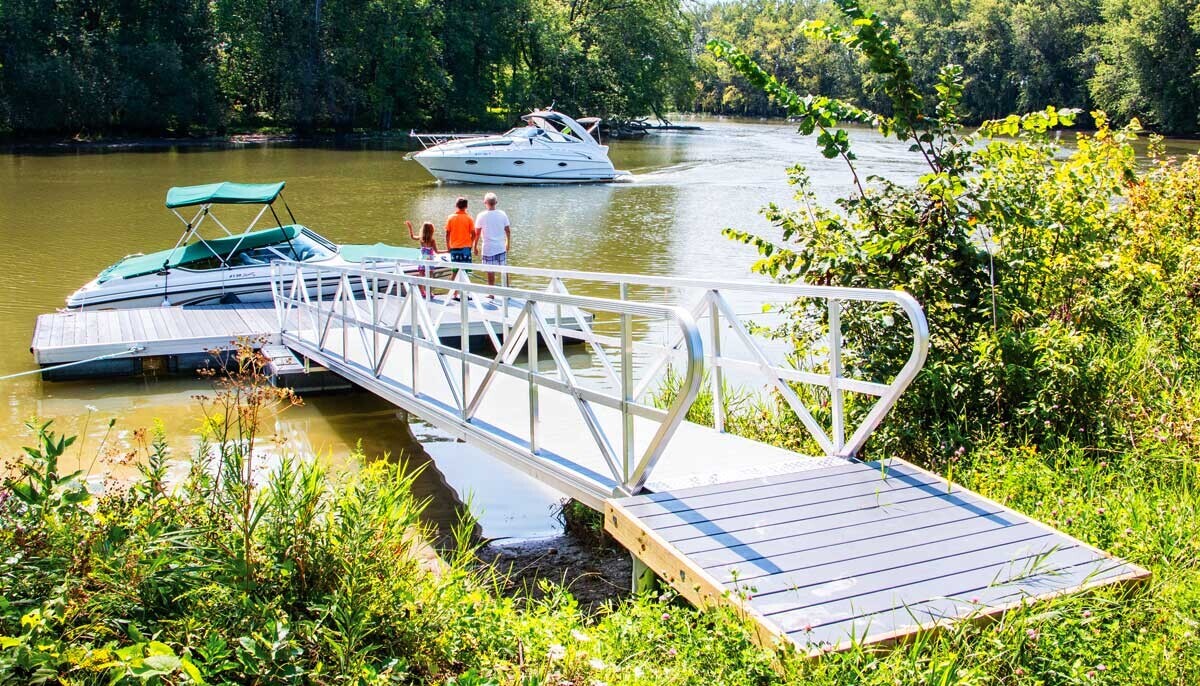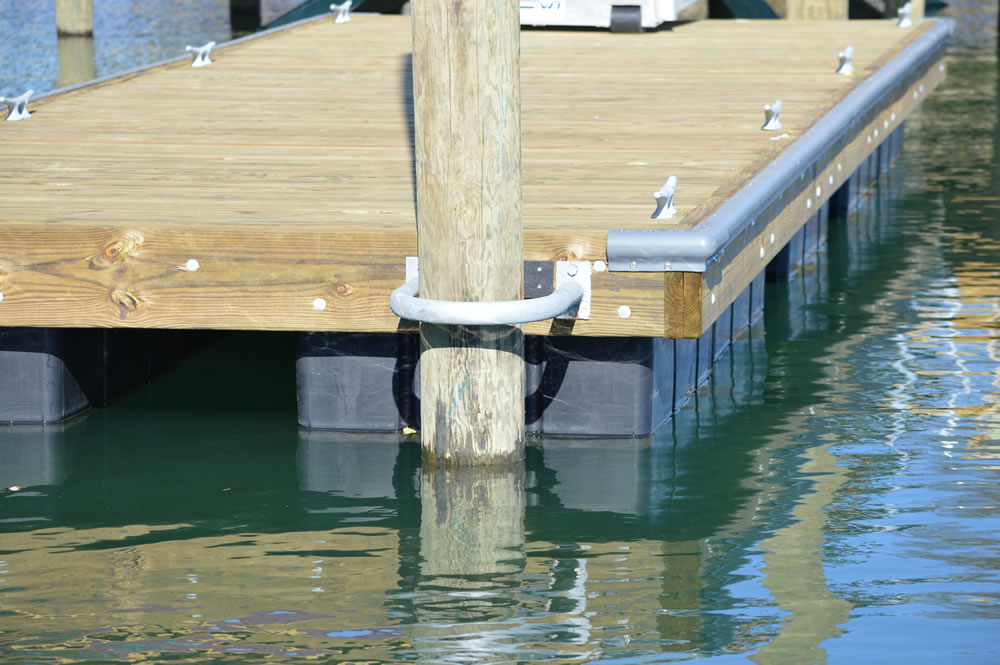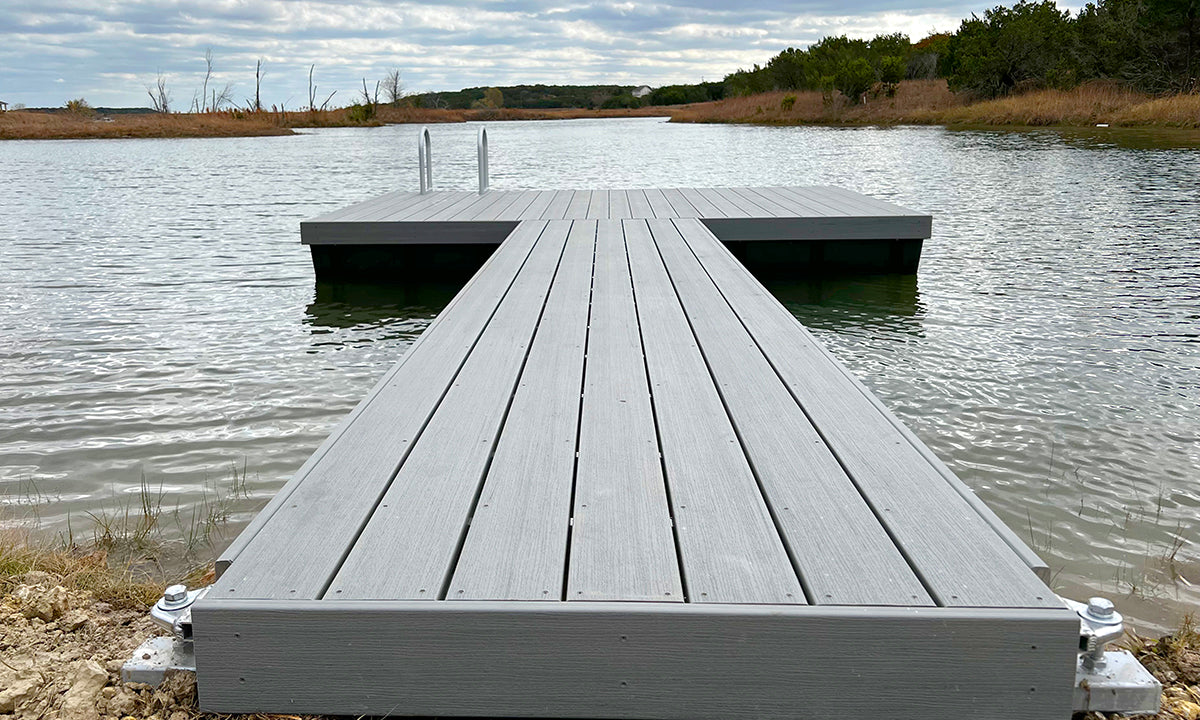Discovering the Comprehensive Floating Dock Services Used by Sector Leaders
Discovering the Comprehensive Floating Dock Services Used by Sector Leaders
Blog Article
The Ultimate Overview to Picking the most effective Floating Docks
Choosing the ideal floating dock needs an extensive understanding of various components that influence both performance and long life. Aspects such as dock types, materials, and essential attributes significantly affect your decision-making process.
Understanding Floating Dock Types
When selecting a drifting dock, it is necessary to understand the numerous types readily available, as each serves distinct functions and applications. Floating docks primarily drop into 3 categories: modular, fixed, and pontoon docks.
Modular docks are composed of individual areas that can be conveniently constructed or reconfigured, making them ideal for transforming water degrees and varied uses, such as recreational activities or industrial procedures. Their adaptability permits modification based upon specific demands.

Pontoon docks are identified by their resilient structure, frequently composed of numerous pontoons that give security and support. They are especially appropriate for larger vessels and are typically used in marinas or for waterside buildings. Comprehending these types help in choosing the most suitable floating dock to fulfill certain requirements, guaranteeing ideal functionality and security.
Key Materials for Sturdiness
Selecting the ideal products for floating docks considerably impacts their resilience and longevity. One of the most usual materials include wood, plastic, metal, and composite materials, each offering unique advantages and constraints.
Wood, typically preferred for its visual allure, calls for normal maintenance to hold up against dampness and degeneration. Pressure-treated lumber can improve resistance to rot, but it may still be vulnerable to bugs and weathering.

Plastic docks, made of high-density polyethylene (HDPE), are resistant to deterioration, UV radiation, and impact, making them a popular option for coastal environments. Their lightweight nature additionally helps with easy installation and moving.
Steel docks, typically created from aluminum or galvanized steel, provide remarkable stamina and toughness. They are resistant to deterioration, specifically when treated, but may call for added insulation to protect against warm accumulation in warm climates.
Composite materials, incorporating wood fibers and plastics, provide the advantages of both timber and plastic, withstanding dampness and fading while requiring very little upkeep. - floating dock company
Ultimately, the choice of materials ought to line up with ecological problems, meant use, and maintenance preferences to make certain the floating dock remains practical and visually pleasing over time.
Important Features to Take Into Consideration
While the selection of products is important, considering vital attributes for floating docks is just as vital to guarantee optimal efficiency and individual satisfaction. One crucial feature to evaluate is the dock's buoyancy capacity, which determines just how much weight it can sustain without submerging. floating docks. This is important for fitting boats, personal boat, and also recreational tasks
In addition, portability is a substantial consideration. Relying on your demands, you may want a dock that is easy to carry and dismantle, particularly if you plan to transfer it seasonally. Stability is another necessary function; a properly designed floating dock ought to decrease movement created by wind and water currents, providing a safe platform for users.
Safety functions, such as non-slip surfaces and rounded edges, are also essential to protect against accidents, specifically in damp conditions. Moreover, consider the accessibility of accessories, such as bumpers, ladders, and cleats, which can boost the performance of your dock.
Installation and Upkeep Tips
Establishing and keeping a drifting dock calls for careful preparation and attention to detail to ensure its durability and optimal efficiency. Begin by picking a proper area that decreases direct exposure to strong currents and waves, which can trigger deterioration. Guarantee that the water depth is adequate for the dock's height and that it is anchored safely to avoid motion.
During setup, adhere to the maker's standards carefully, as incorrect setting up can endanger stability. Use top quality products immune to corrosion, such as light weight aluminum or dealt with timber, to boost durability. Consistently evaluate all components, consisting of drifts, adapters, and anchoring systems, for indications of damage or wear.
Upkeep is vital for prolonging the life of your dock. Tidy the surfaces regularly to avoid algae build-up and check for any loosened fittings that might need tightening up. Guarantee they remain undamaged and complimentary from slits why not check here if your dock utilizes flotation protection tools. Furthermore, think about using protective finishings to wooden parts to reduce weathering results. By sticking to these setup and upkeep pointers, you can delight in a reputable and useful floating dock for years to find.
Budgeting for Your Dock
Budgeting for your dock is a vital action that can substantially influence your total fulfillment and financial investment in a waterside building. Developing a clear budget plan helps you navigate the various choices readily available and guarantees you make notified choices that align with your financial abilities.
Begin by identifying the size and design of the dock you need, as these aspects will considerably influence the price. Floating docks can vary significantly in rate, depending upon products, buoyancy, and features like devices and ramps. Study different producers and distributors to compare costs and recognize the market worth.
Along with initial expenses, take into consideration continuous expenditures such as maintenance, insurance, and prospective fixings. Allocate funds for these persisting expenses to avoid surprises down the line. It's additionally prudent to budget plan for any type of essential permits or inspections, which might be required by local guidelines.
Last but not least, bear in mind the potential roi. A tactical dock can improve your residential property's worth and charm, offering a positive financial influence in the long term. By budgeting effectively, you can ensure that your dock meets your needs without endangering your economic security.
Conclusion
In conclusion, picking the suitable floating dock demands a complete analysis blog of various elements, including dock types, products, necessary attributes, and installment procedures. Cautious consideration of budgetary restrictions will additionally ensure an audio financial investment.

While the selection of products is critical, taking into consideration important attributes for floating docks is just as vital to guarantee optimum performance and individual satisfaction.Setting up and preserving a drifting dock needs mindful planning and focus to information to ensure its durability and ideal efficiency. Floating docks can differ significantly in rate, additional hints depending on products, buoyancy, and features like accessories and ramps.In verdict, picking the perfect floating dock demands a thorough evaluation of numerous elements, including dock kinds, materials, necessary features, and setup procedures.
Report this page